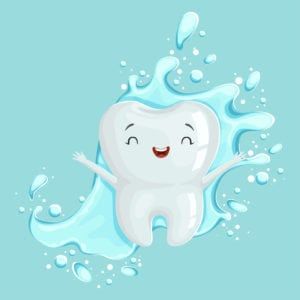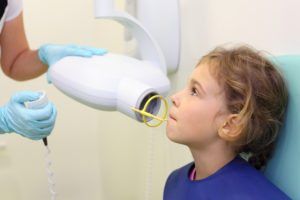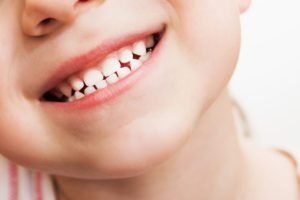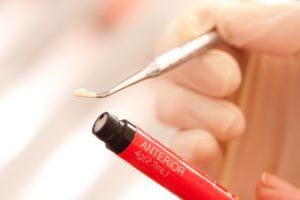
Silver Diamine Fluoride (SDF)
There are some instances when we may want to slow down the decay process instead of placing a filling material. Silver Diamine Fluoride (SDF), is a liquid that can help slow down tooth decay and help relieve sensitivity. Decayed teeth often look brown where there is a cavity, but after SDF application, all the brown […]
Continue Reading...
Tooth Extractions for Children
Some of the most common reasons a baby tooth needs to be extracted include: Dental infection (abscess) – this is an infection in the jawbone, caused by a large dental cavity that was left untreated. This requires extraction of the tooth that has the cavity, so that the infection is drained and prevents spreading to […]
Continue Reading...
Pulpotomy (“ Nerve Treatment”) & Crowns in Children
Pulpotomy (“Nerve Treatment”) Left untreated, a cavity can grow into the nerve of a tooth, causing a toothache. When this happens, our Pediatric Dentist may recommend a “nerve treatment” to save the remaining tooth. Our gentle pulpotomies, performed comfortably in our office, remove the decay and infection, and relieve pain. Once the pulpotomy is completed, […]
Continue Reading...
Your Child’s First Visit
Children should have a dental care home – preferably with a pediatric dentist who specializes in the oral health of children and adolescents. Early childhood dental visits help a child acclimate to the dental environment and become comfortable with his or her oral care provider. By attending appointments on a regular basis, children learn to put a value […]
Continue Reading...
Importance of Dental X-Rays
Dental x-rays are an important tool in pediatric dentistry. As the teeth and jaw mature, x-rays provide pediatric dentists an enhanced view of a child’s oral health development and the underlying problems that may lead to complications. Depending on the condition of the teeth, jaw and soft tissues of a child’s mouth, a dentist may use x-rays to […]
Continue Reading...
Thumb-Sucking and Pacifier Use
Children are born with a natural sucking reflex. In fact, babies begin to suck on their fingers while still in the womb. Sucking a thumb or pacifier is relatively harmless during the first few months of life and may actually be emotionally comforting to an infant. However, prolonged sucking that lasts into the preschool years […]
Continue Reading...
Types of Sedation for Children
Sedation helps ensure that pediatric dental visits provide young patients with a comfortable experience and effective results. Often, children are intimidated by dental visits or otherwise unable to sit still during exams and treatments for extended periods of time. Sedation helps minimize anxiety and relax children during dental visits – all under the safe supervision […]
Continue Reading...
When Will My Baby Get His /Her First Tooth
Children are born with a set of primary teeth that last throughout early childhood. These primary teeth typically begin to emerge during the first year of life between the ages of 4 and 12 months. This begins a process that usually ends with a complete set of primary teeth by age 3. Though it is […]
Continue Reading...
Why are Baby Teeth Important
The primary teeth are the teeth that babies are born with and continue to develop in the first few years of life. Though these teeth eventually fall out to make room for permanent teeth, primary teeth serve many important purposes. Not only are they essential to a child’s physical development, but they also contribute to […]
Continue Reading...
Tooth-Colored Fillings for Children
More than half of children over age six have some degree of tooth decay. When cavities are left untreated, they can lead to pain, infection and even tooth loss. Fortunately, pediatric dentists can fill cavities to prevent them from worsening or causing complications. Modern dentistry has made it possible to fill cavities discreetly using tooth-colored […]
Continue Reading...
